Astro Bot is a sequel to games that were once merely evaluated as tech demos. The development team repeated this process once in 2013 and again in 2020. Both times, the small PlayStation bots took the stage to showcase the new features of the PlayStation 4 and 5 consoles. Now, a full version of this series is available, and this time, not just to demonstrate the console’s features but also to display the artistry of the developers who worked on it.
Story and Plot
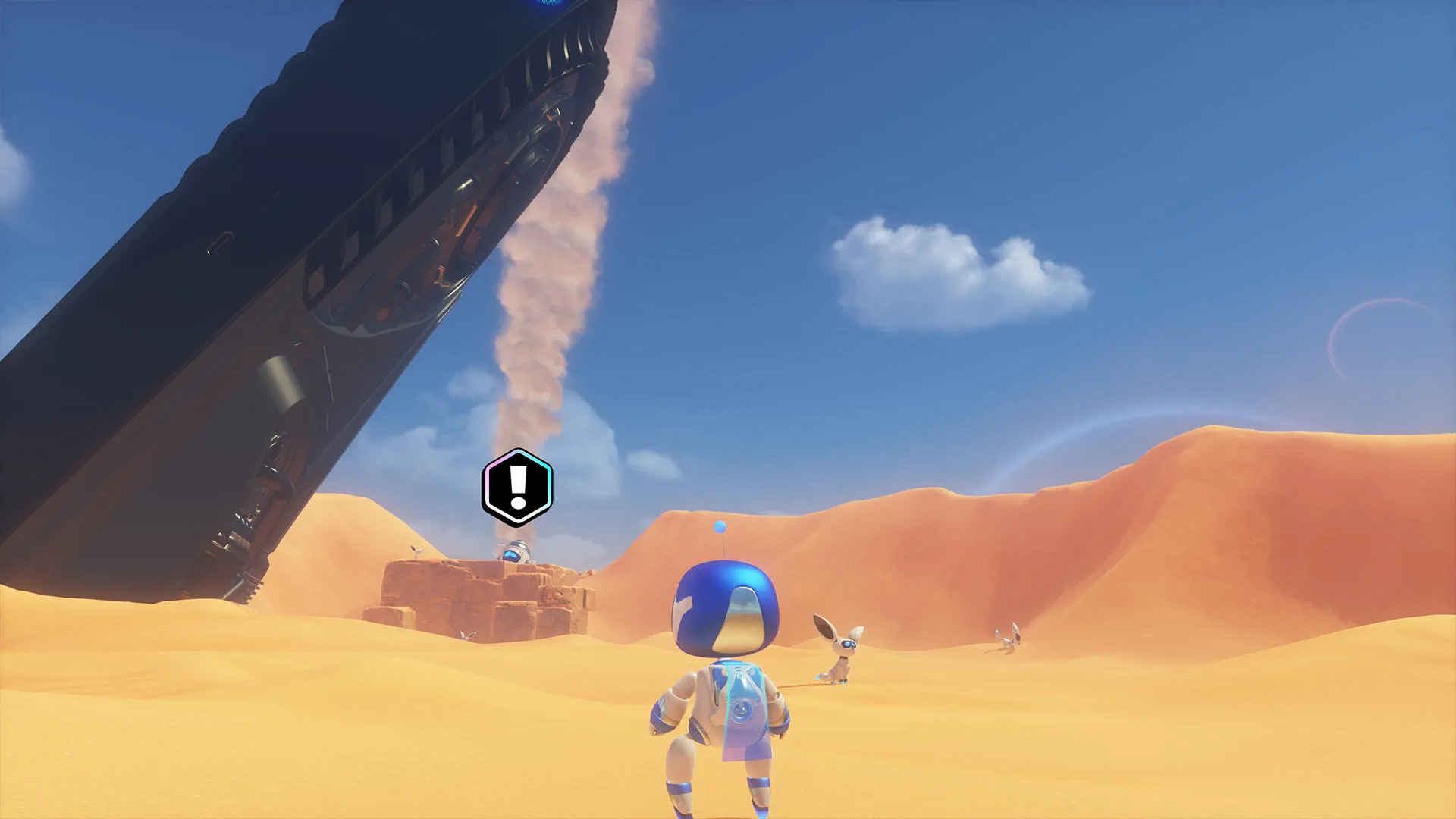
In the world of Astro Bot, everything originates from the video game universe. The bots themselves are either characters from PlayStation IPs (VIP Bots) or third-party games released on Sony consoles. Thus, the central element and main form revolve around “PlayStation products”. Below, we will discuss how this game draws inspiration from Nintendo platformer games. One of the most important traits of Nintendo games, especially Super Mario Odyssey, is the heavy focus on a central concept. In that game, the character’s hat played a pivotal role. In Astro Bot, everything revolves around PlayStation hardware and software creations.
The gameplay and, even more broadly, the story are based on this concept. However, are we dealing with a unique story overall? In practice, not quite. Team ASOBI has created a general narrative to justify the player’s efforts across different planets. But how? At the very beginning, a PlayStation 5 console (with the fictional name Mothership) houses the game’s bots. They’re traveling across the galaxy when the main antagonist enters and causes significant damage to Mothership.
As a result, main components of the console are scattered across different parts of the galaxy, and many bots also need to be rescued. In the previous version, the main goal was to explore the PlayStation hardware’s world, while in this version, the goal is to find and recover these components. The main character’s mission, alongside the developers’ intent, intersect interestingly. It’s during these moments that we see the main character’s fall on the sand—a scene that takes older players back to Uncharted 3: Drake’s Deception. Perhaps Astro Bot’s inspiration from this scene is a reference to how movies like Mission Impossible took inspiration from PlayStation creations!
As a result, the developers have deeply tied the bots to PlayStation’s history and the gaming industry, making them more meaningful than ever before. This time, unlike the previous game, there’s no focus on finding historical PlayStation products and equipment. While these products are safe, we are faced with an antagonist who creates obstacles for the ship and the bots themselves.
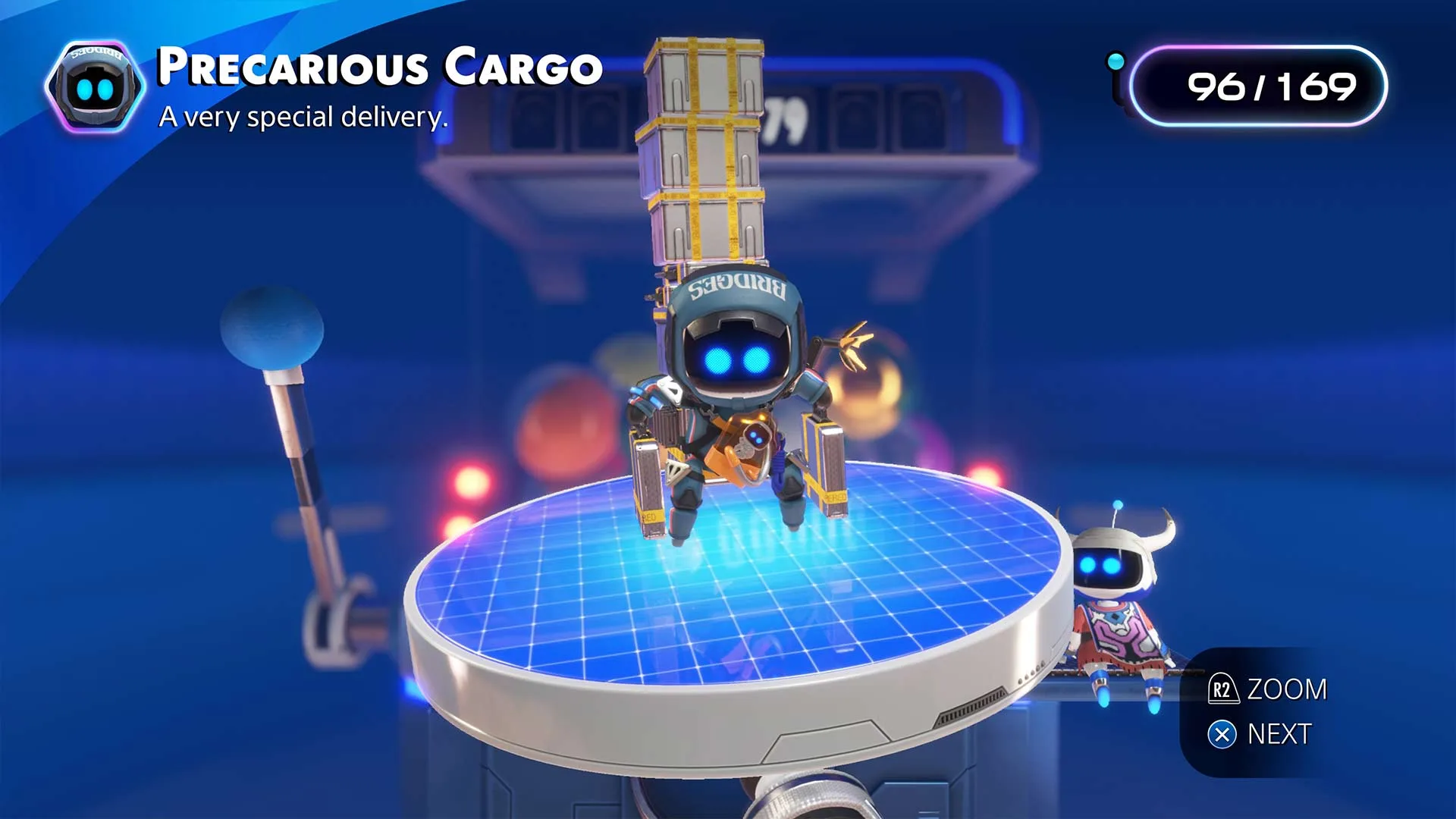
Therefore, it makes sense that throughout this long journey to save the other bots, we also witness bits of Sony’s gaming universe. The developers’ depiction of the characters is, in a way, indescribably charming, despite the lack of dialogue and serious storyline. Bots are always amusingly struggling—whether when you try to rescue them or in other encounters.
Using costumes from familiar bots of other games in levels and settings that relate to their original games adds more depth to them. However, this depth doesn’t reach the level of the most significant character developments in the gaming industry! Clearly, this wasn’t the goal, and if the developers had taken the matter too seriously, they wouldn’t have succeeded in translating their mental world into the game.
There’s no need to grasp the many references, Easter Eggs, or connections between the placement of each character during the rescue and the items you unlock in Crash Site. If you have memories with PlayStation, even the sentence displayed when rescuing each bot will have meaning for you! However, if you don’t recognize the references, nothing significant changes, and the storyline remains fully understandable.
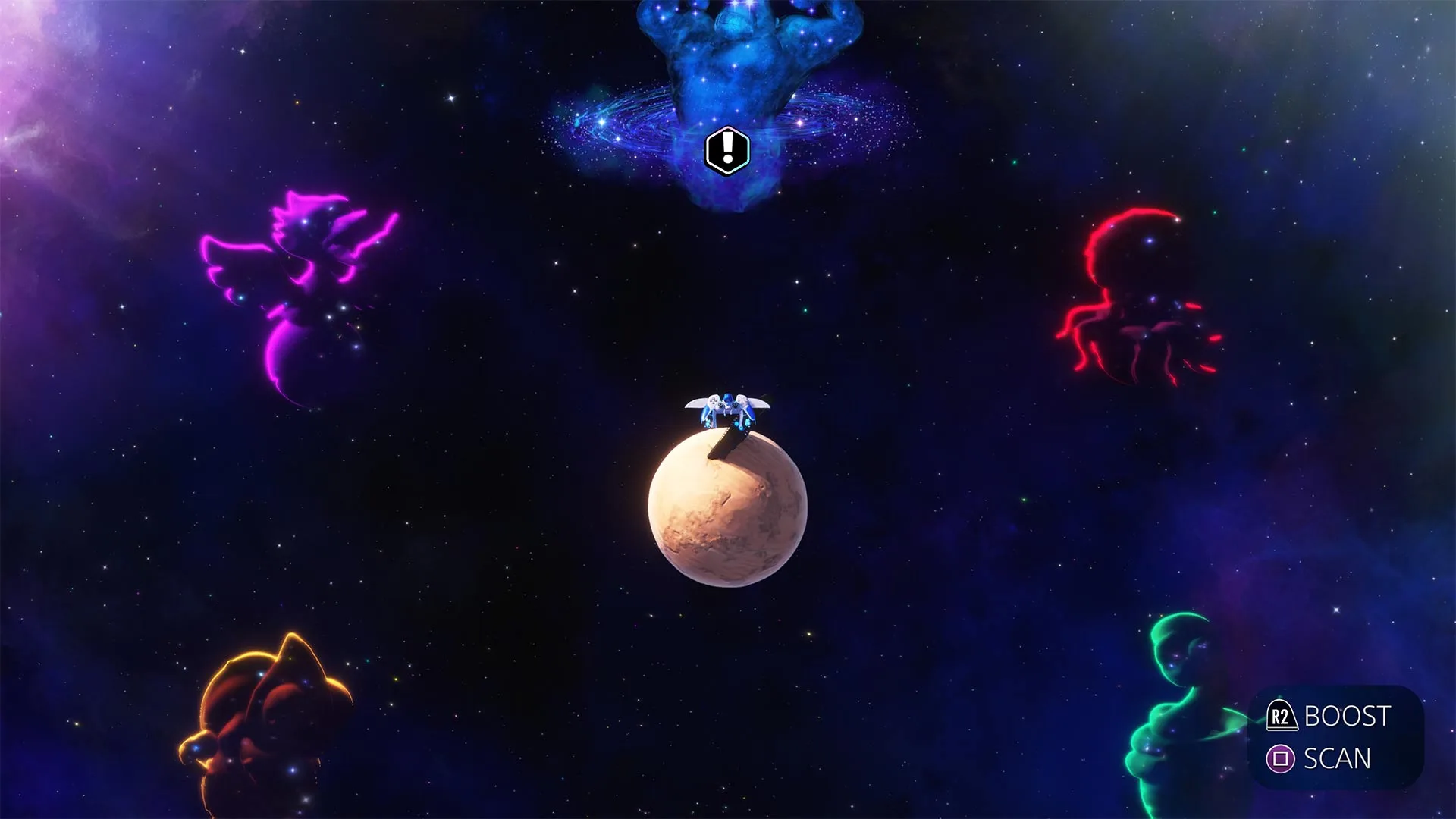
In other words, the ultimate goal in Astro Bot is to evoke the feelings a gamer experiences with these characters in their original worlds! If you rescue a character from Resident Evil, your familiarity and memories with them should foster a closer connection. Otherwise, how could a horror character maintain its sense of fear in a humorous and arcade-like game such as Astro Bot?
Astro Bot succeeds in this artistic endeavor. The use of the core traits of four main PlayStation brand characters in the game’s world, along with brief narratives from their fictional worlds, propels this trend even further. We’ll talk more about these four characters in the relevant section.
Moving on, the grouping of all bots always emphasizes their unique identity. Some might interpret that the entire fictional and real elements of the video game industry make sense when brought together. Others might view their presence as a team where each follows their individual mission.

Besides the usual assistance the bots offer in advancing the story, the game’s later sections include special assistance that eventually leads to the main stages. Around these moments, there’s a brief instance that stands out as one of the only times an emotional scene can be observed in the game.
However, from the beginning to the end of the stages and even the last moments of the game, it’s all about fun, humorous, entertaining, non-serious, fast-paced scenes. Astro Bot is a game meant to inject the feeling of endearing creatures that seem to have been friends with gamers for many years, hidden beneath various costumes and titles. It’s similar to cute pets, whether domestic or wild, that are not expected to teach life lessons. They exist to live, and through their presence, we experience better feelings!
Gameplay and Game Design
Team ASOBI’s new game, as a platformer, executes many traditional principles of the genre in a modern way—a method that was similarly applied in the two previous games but on a much smaller scale. Super Mario Odyssey and It Takes Two are standout games from recent years that have redefined the platformer genre.
But how exactly does this redefinition happen, and how does it manifest in Astro Bot? Firstly, it’s by blending various genres, or at least different mechanics, within the core genre. In moments when Astro Bot functions as a platformer, it can also act as a third-person shooter!
Furthermore, the developers have borrowed ideas and core designs from other popular games. Finally, small and large innovations have been introduced in every stage, making each level distinctly different from the others.
The main character, “Astro Bot”, retains many of the standard features found in most platformers. Apart from moving in various directions, Astro Bot can jump, hover in the air briefly, strike enemies, and spin to deal continuous damage. Generally, taking one hit from enemies results in Astro Bot’s death. Outside of boss fights battles, Astro Bot doesn’t have life bars, hearts, or any health systems, nor is there a stamina meter or any other similar measures. Almost all abilities recharge automatically, with no need to collect anything.

As you know, the two previous games in this series were created purely for promotional purposes, and whether you accept it or not, they hinted at the use of hardware innovations in future games. This version is that future come to life! In the previous two games, the bots performed tasks to achieve a non-entertaining goal: one to showcase the innovations of the PS4 Camera, and the other to combine DualSense features with the PS5 hardware.
In this version, nothing is done simply for the sake of advertising or external goals. If you’re climbing a specific platform, the developers’ use of DualSense features is meant to create entertaining and logical moments, not to shove the console’s features in your face. You’re dealing with an original title that was designed purely for enjoyment.
The level design, both vertically and horizontally, is full of innovation. Moving on land, in the air, and again, as in the 2013 version, underwater, creates numerous scenarios. In many levels, the main character gains a new ability from a chest upon entering a stage. The process of learning how to use this ability is done indirectly within the game environment during the first stage it is introduced.
Each ability often adds more than one core mechanic to the game, and usually operates on a charge system—after each use, you have to wait a short time before it becomes available again. One example is the ability for Astro Bot to absorb water (like a sponge), which not only makes the character larger and stronger but also allows it to release the absorbed water in different ways to alter the game world.
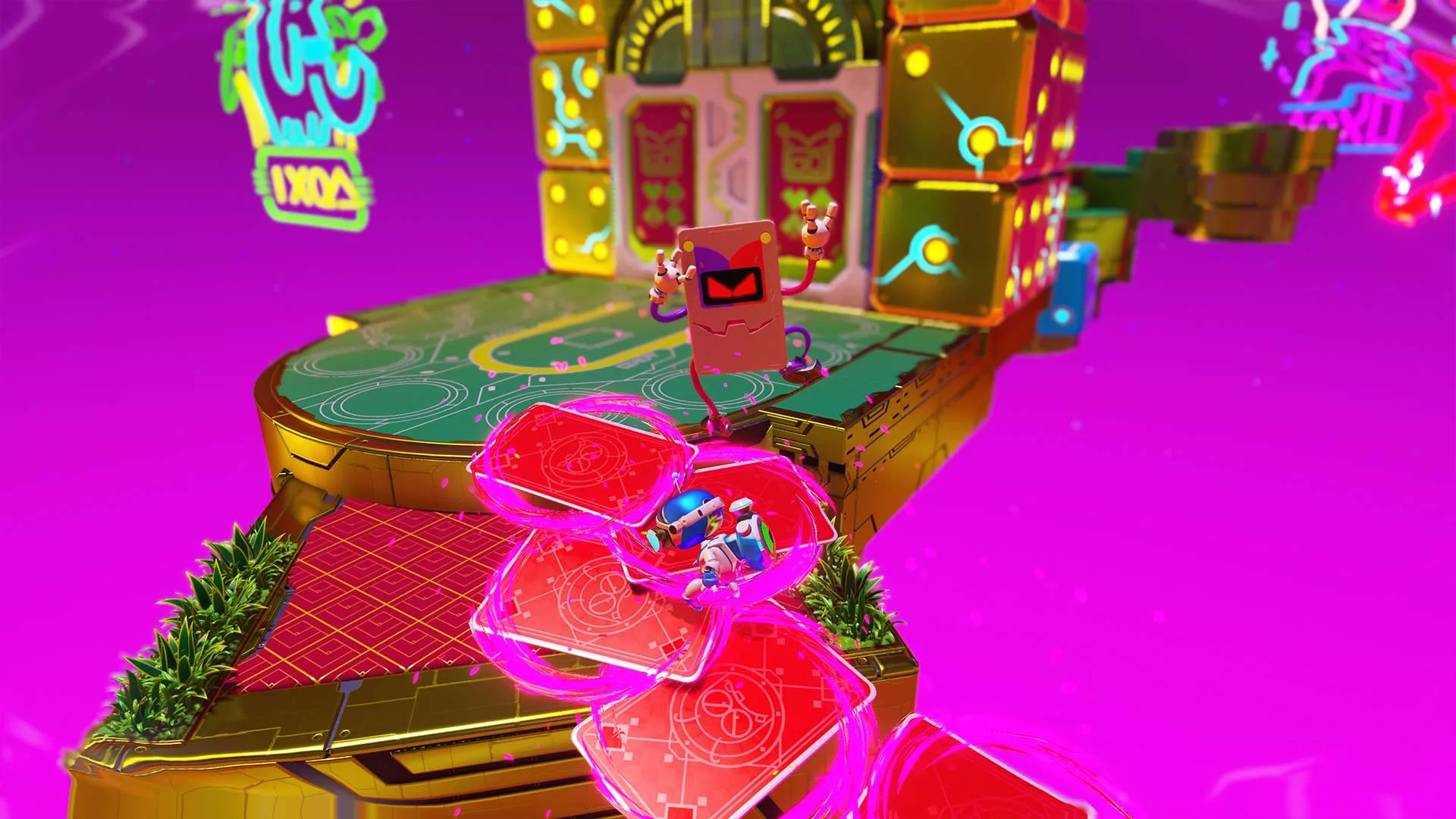
For instance, you can extinguish fires, clear the black goo that some enemies emit, or water a garden (causing it to grow and either yield an item or open a new path). Even the combination of absorbing and expelling water creates more scenarios. Each of the 15 new abilities in this version, with slight differences in quality and quantity, changes how the player approaches the game.
Just when you’ve mastered one ability, the unique layout of the stages introduces you to another ability, and the player has to go through the learning curve again. Note that only one ability can be used at a time, and it’s given to the player based on the level’s design. By the time you reach the middle of the game, you’ll have been introduced to all of these abilities, and now it’s time to test your skills in more interesting scenarios.
At the same time, some environmental mechanics are introduced. For example, a switch may allow you to toggle between night and day, changing the orientation of platforms. Such mechanics are abundant in the game. The environmental mechanics are so distinct from one another that you’ll never forget what they did in different levels and will never confuse them.
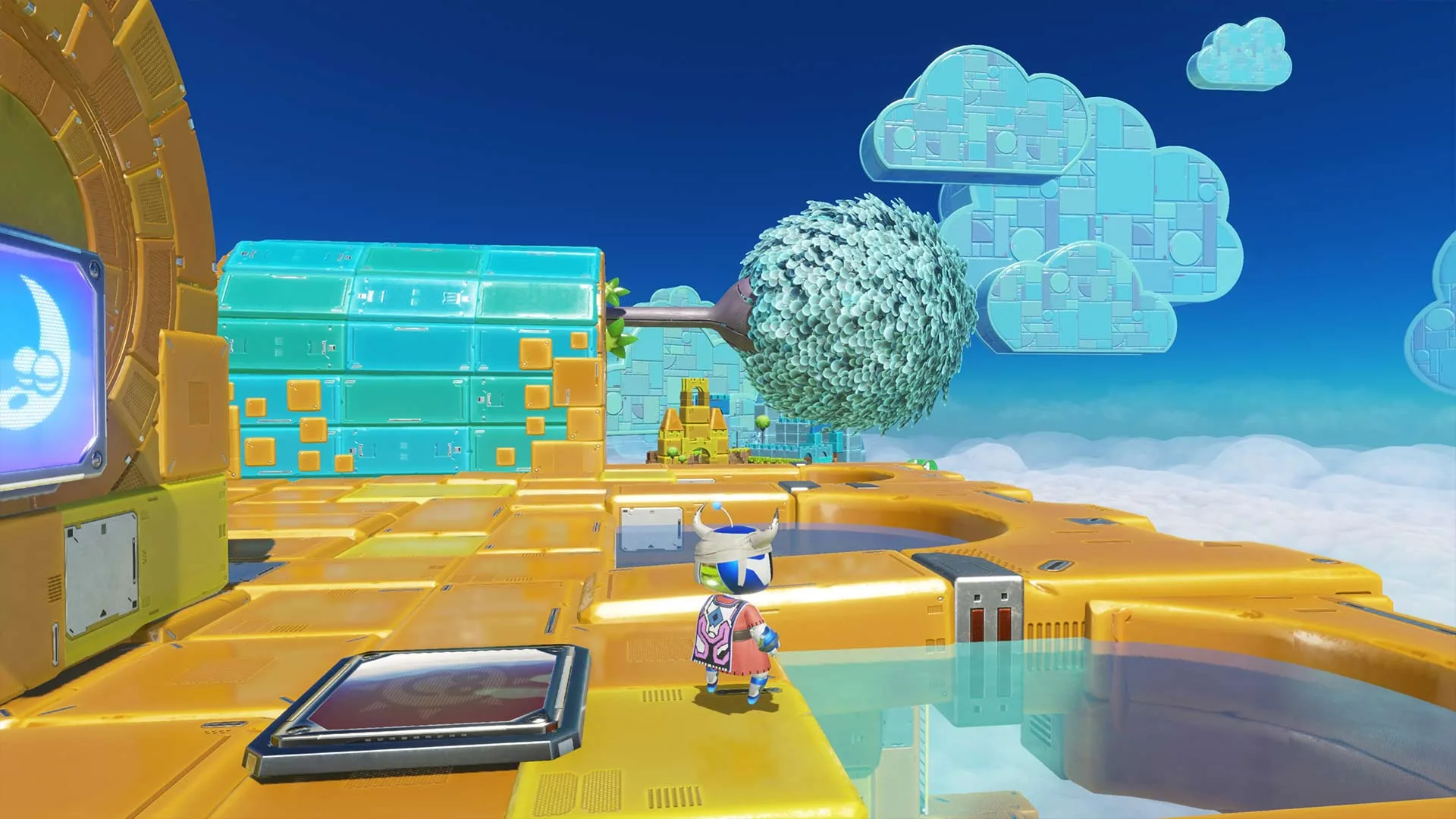
One minor criticism of the stages is the lack of Metroidvania-like elements or, more generally, why there are no actual puzzles in the game. Although the developers have applied many subtleties to the current level design, adding certain elements could have taken Astro Bot in a different direction. For example, if some optional items were only accessible after solving puzzles (which are absent in this game), players would focus more on the structure of the stages after engaging their minds with those puzzles.
In many levels, within each stage, there’s no particular need for knowledge or skill that would later allow you to access a new part of the stage. This way, if puzzles were included, the levels could deviate more from their preset paths. The player would experience learning the routes and, as a result, develop a mental familiarity with each level’s environment.
Aside from this, the game’s level of challenge is smartly designed. The levels that advance the main story generally offer a moderate challenge. As you progress through new planets, the difficulty of the main levels (mandatory levels) gradually increases but does not surpass a reasonable amount that all gamers can handle. In addition to the mandatory levels, there are various types of levels. Some of these levels are very short and can be completed quickly.
These optional levels, are well-suited for rescuing more bots (which are needed in the main hub, Crash Site), changing the game’s atmosphere, and giving the player a mental break. However, there are special optional levels where the gameplay speed increases significantly, and completing them isn’t as easy. In the mandatory levels, with careful examination or educated guesses, you can figure out the collectibles, hidden locations, and, most importantly, the method for overcoming each obstacle or defeating enemies. This effective approach is not only due to the proper level design in terms of length and depth but also thanks to the well-thought-out camera design and dynamic angle, which we’ll discuss later.

In the challenging, special optional levels, you may need multiple attempts and even, occasionally, a bit of luck! This is entirely intentional. These stages are effective in their own way, creating contrast with the main levels, allowing all players to enjoy and continue the game with excitement based on their abilities. The difficulty of the main levels is further reduced if you purchase bluebirds, which help you find items. These birds become available after you complete a level for the first time.
Beyond the strengths mentioned so far, another section where the game could have performed better is with its enemies. The number and variety of enemies are significant factors in platformers. Each galaxy’s final level has a boss fight. In boss battles, you receive two additional hearts or lives (as mentioned earlier). As with most games, once you’ve learned the boss’s attack and defense patterns across multiple waves, defeating them becomes relatively easy. Since they appear at the end of the main levels, the bosses are not designed to be particularly challenging.
The ordinary enemies have various attack patterns. Their presence and impact in the main levels are in line with the abilities. You won’t feel much challenge from the enemies, and even the combination of different enemy attacks doesn’t require the player to use different strategies. In the grand scheme of things, given the game’s purpose, there’s no need for this either.
Visuals and Sound Design
Astro Bot features more than 300 robotic characters and 60 planets to explore, each designed with incredible detail and craftsmanship. The game’s artistic design spans a wide range of styles, from pixel graphics to semi-realistic scenes and even simple, childlike forms. The environments reflect different seasons, geographical locations, traditional and modern settings.
As mentioned earlier, the design of each stage stems from the developers’ goal of conveying a specific emotion. They paid attention to making sure that the bots you rescue from each stage and the harmony between them and the environment feel meaningful.
The design of the numerous models for the bots, with no visible flaws, is very satisfying. All the bots or creatures you find will later receive additional items that you can purchase. These items allow you to see them more clearly and interactively in the game’s main hub. However, these items have no effect on the characters’ performance.
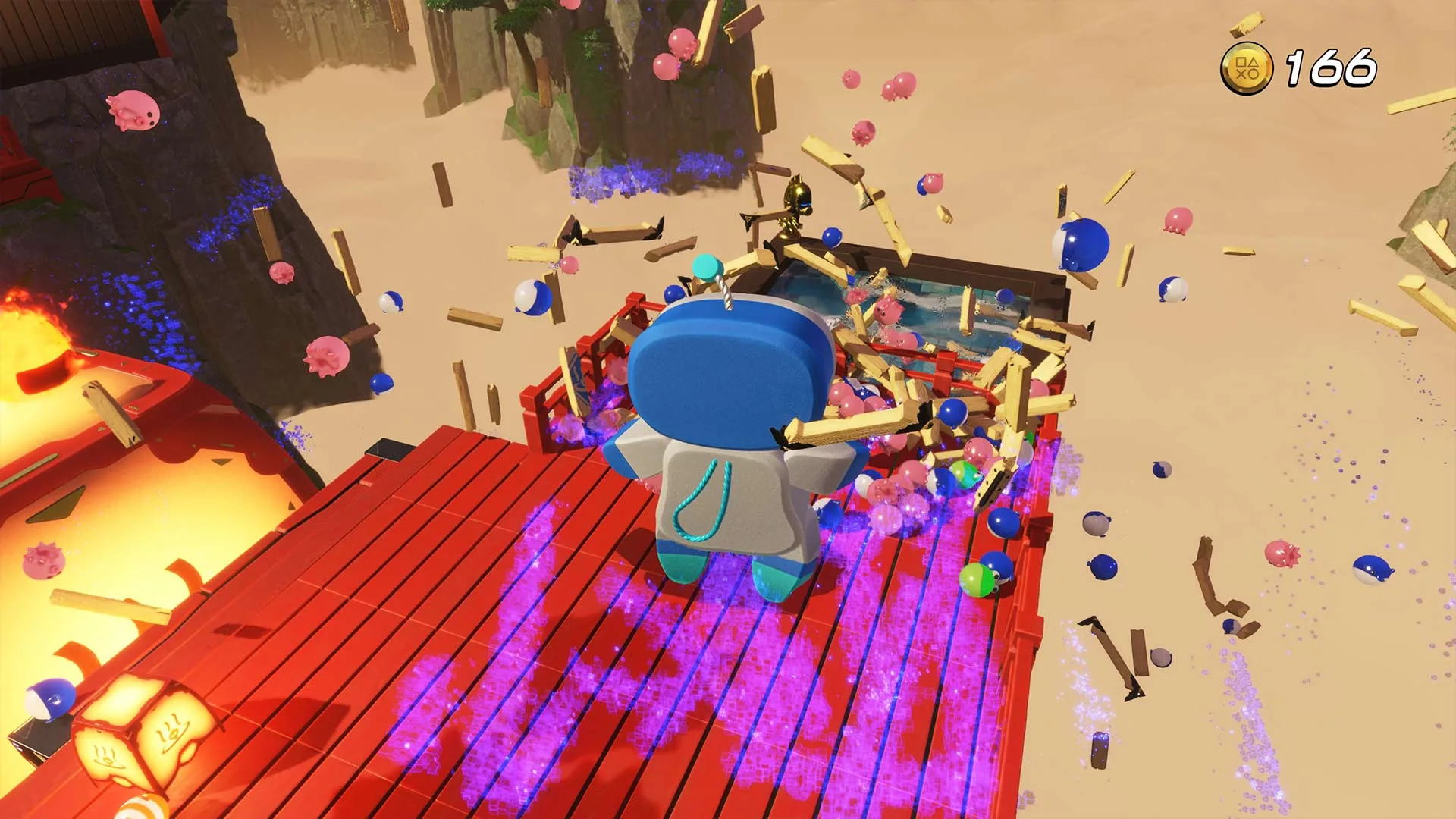
The visual design and appearance of the game’s enemies are also aligned with each stage’s overall theme. Thus, you’ll often encounter the same enemies, but due to being in a different stage, they’ll have new colors and designs, adding variety to the environment.
Customization options for the Dual Speeder and Astro Bot’s outfit, based on earlier assumptions, are still available. If you’re interested, after unlocking the Museum, you can closely observe the bot models. However, before that, you need to find puzzle pieces to build the structures that provide access to customization features and the Museum.
When the main character gains the ability to shrink in size, our first concern as players was how appropriately the stages would be designed for this. On one hand, the stages need to be fun yet challenging. On the other, with the character constantly changing size, there was a risk of bugs. Finally, the question of visuals comes into play: Will textures that look good under normal conditions become bothersome when the character shrinks several times in size?
Fortunately, all three of these factors—level design, texture quality, and bug-free performance—work perfectly. The textures maintain their quality both up close and from a distance. The animation and physics of the character adapt to the real-world scale at the moment when the character’s size changes. Therefore, you can navigate platforms suited for the smaller dimensions with perfect timing!

Ultimately, there are no noticeable bugs, or if any exist, they’re extremely rare. The presence of numerous items on the screen doesn’t cause a drop-in frame rate, and the image is rendered stably.
So, if someone approaches Astro Bot, they should be prepared to fully enjoy the game’s physics, effects, and animations, because these aspects never disappoint or leave room for complaint.
Although the game doesn’t use ray tracing, the lighting and reflections are incredibly well done, in both angle and intensity. You’ll often find yourself spending minutes just watching the reflection of light off a metal surface, Astro Bot’s body, or obstacles near a light source. The reflection of light off a muddy hill or the warmth you can almost feel emanating from the sand will leave you in awe.
Let’s not forget that everything in the game reacts to the player’s movements and actions. From the stains left on the ground where the main character walked, to the animation of melting snow. From the swirling leaves in the air to the balls floating on water—everything behaves like a real object, and the character’s actions affect it in a realistic way. When encountering liquids, like water or lava, the process of flowing, moving, and settling happens in a fully realistic manner. Water in specific parts of the game even washes away black color. Extinguishing flames with water and watching sponges return to their normal size after absorbing water further demonstrate the team’s commitment to liquid physics.

The movement of other materials, like sand, is similarly well done. Breakable glass, destructible walls, and more are meticulously designed so that their collapse, explosion, and even the sound of interaction with them are based on real-world counterparts.
The user interface (UI) and HUD are kept as minimal as possible, providing a seamless experience for the player. During gameplay, no visual elements clutter the screen—only when you collect coins, items, or rescue bots does anything appear, and even then, it’s minimal and unobtrusive.
When you have a throwable weapon or item, targets are automatically highlighted. At specific moments, an indicator will point to events like sections within the game world, helping with navigation.
While navigating the game’s map, planets, and various sections, you can quickly and easily spot what you’re looking for. Indicators for things like charge time, capacity, and the number of lives during boss fights appear behind the main character, within the game world itself, avoiding unnecessary clutter on the screen.
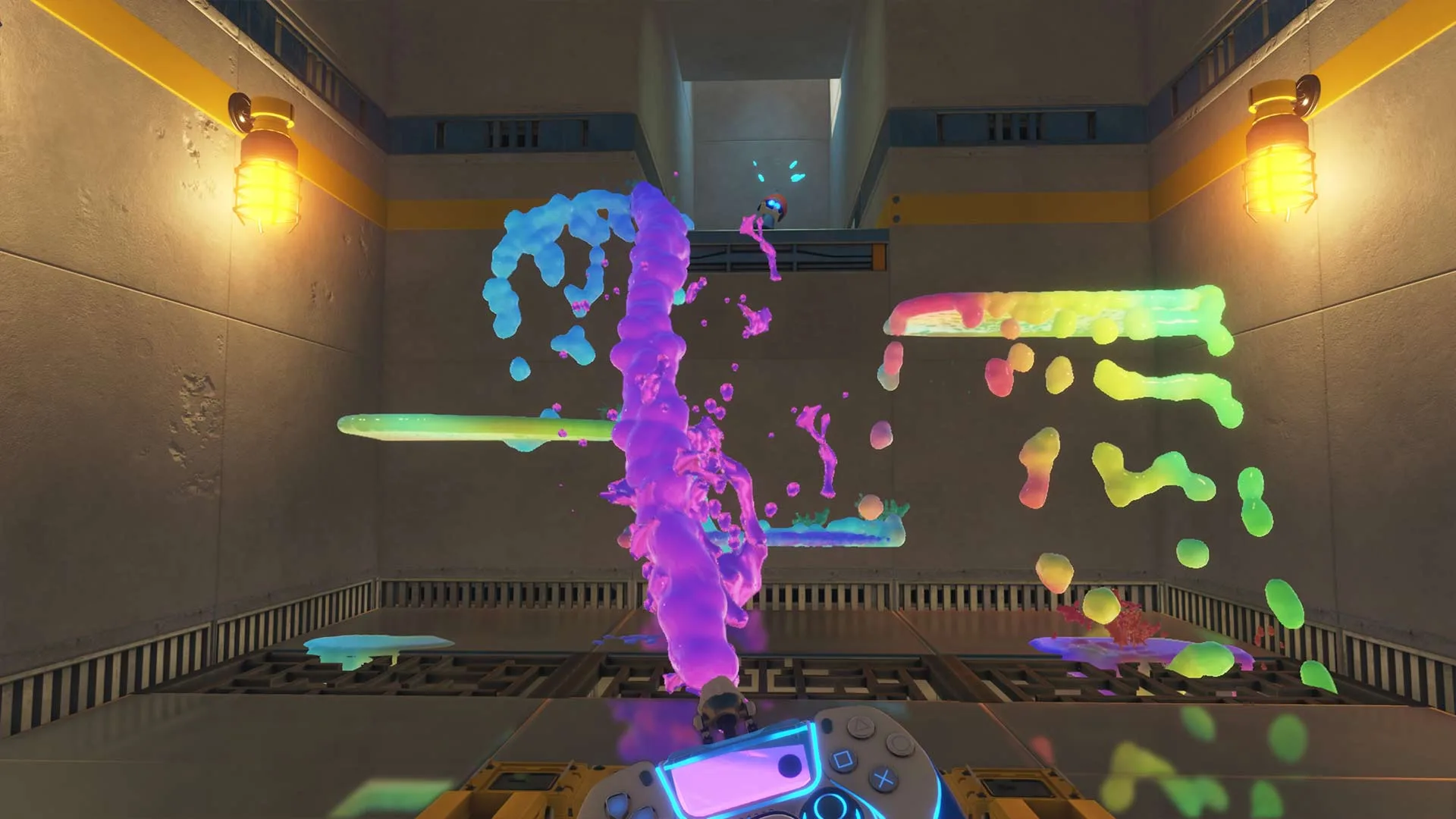
When you open the menu during gameplay, the number of bots you’ve rescued is attractively displayed inside the Dual Speeder, and even responds to the physical movement of your actual controller.
Their cute, faint voices during these moments and other encounters turn them into lovable characters. The sound design in Astro Bot might be underrated. The main theme song from the previous game, which was composed for the PS5’s core components, is repeatedly played in this version as well.
The music, in various ways, continues to emphasize the game’s overall form and essence. For example, in the main hub, a western-themed track plays in the background, with a group chanting the word “Astro”! In the levels dedicated to the four PlayStation characters, this also applies to the original games. The first time you hear the word “Boy,” you’ll immediately recognize this.
If we consider this to be one of the finer details in the game that may mistakenly be overlooked, then the sound engineering will certainly be appreciated, even by the least observant players! The music becomes bass-heavy underwater, and it echoes in enclosed spaces. These features are commonly found in most games, but they are the kind of details that, if poorly executed, their absence would be more noticeable than their presence.
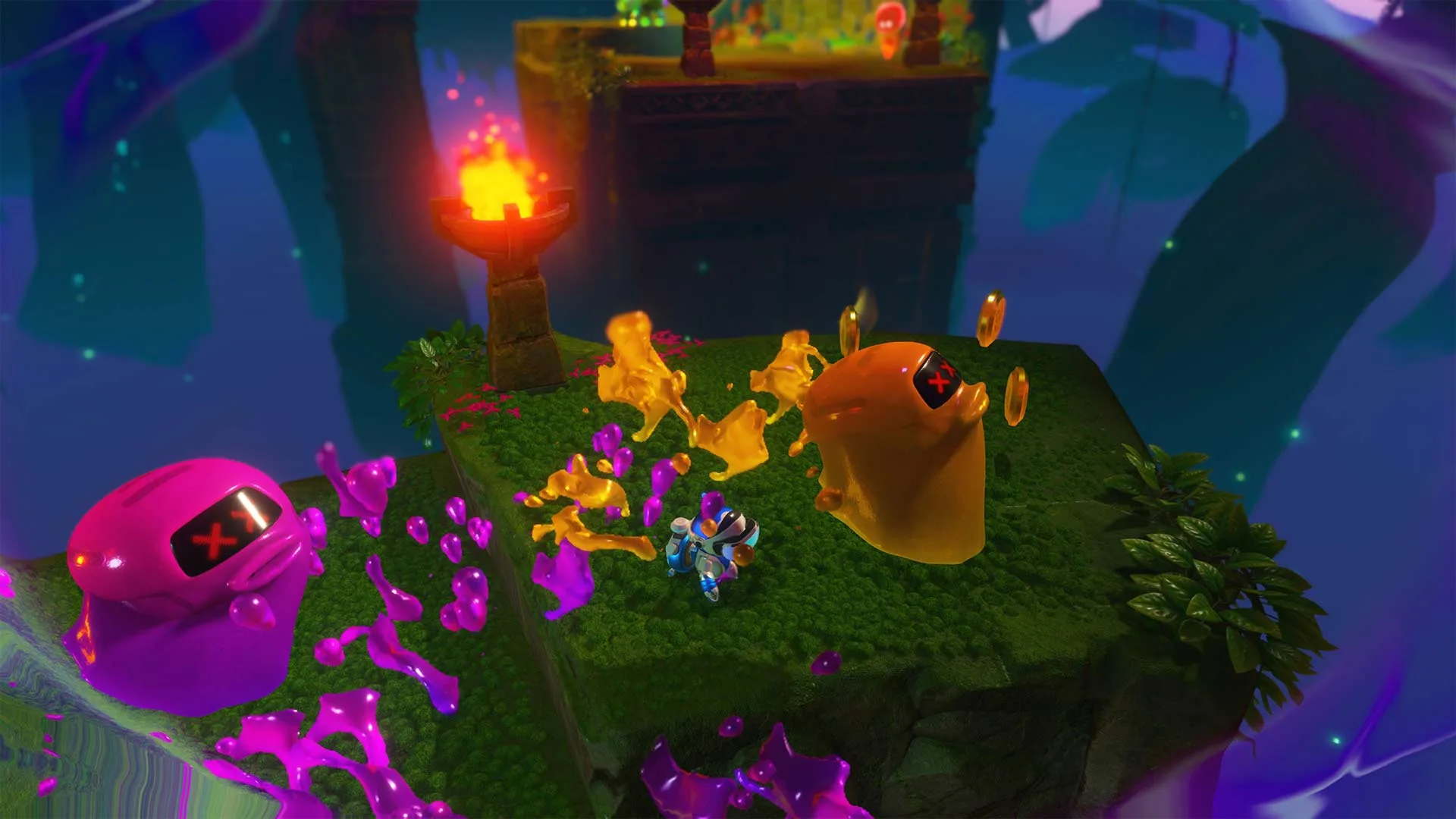
The development team has spared no effort in the production, design, and placement of sounds. Objects become more “real” due to their unique sounds, and this is clearly evident in Astro Bot. The optional side levels feature much faster-paced music that informs the player of the accelerated gameplay. It’s clear that the music in these levels triggers a higher adrenaline rush in the player’s brain, resulting in more excitement.
Nostalgic and authentic sounds from PlayStation products are prominently featured in the game. The main levels music is pleasant, and even if you replay the levels multiple times, you won’t regret doing so.
Technology and Innovation
It probably goes without saying that the features of the PlayStation 5 and DualSense controller are exceptional in Astro Bot. The second installment of this series was created specifically to showcase these features, and in the current version, everything has practical applications. 3D sound, its transmission via Haptic Feedback and the DualSense speaker are outstanding. The sensation of raindrops hitting the controller, the sound of waterfalls, or the feel of moving across different surfaces are all conveyed beautifully.
The Adaptive Triggers perform their tasks as expected. Activating any ability with the triggers produces a unique tactile sensation. The combination of these functions with other DualSense features creates some truly fun moments. If you’ve enjoyed the feeling of throwing and recalling the Leviathan Axe in God of War 2018 and Ragnarok, you’ll experience something similar here, as you get to wield the axe in a dedicated level!

Even when you recover one of the Mothership’s core components and begin repairs, the triggers provide special, distinct feedback. While purchasing from the Gacha Lab, the feeling of pulling the lever and pressing the item capsules is accurately transmitted through the controller.
The gyroscope in the controller is also frequently used. In any segment where the game hands control over aiming to the player (instead of doing it automatically), moving the controller allows you to adjust the aim on-screen. The movement of one of the four PlayStation characters with a dedicated level is entirely controlled via the gyroscope. Additionally, the color of the Light Bar on the controller changes based on the in-game situation, especially at the end of levels. In fact, someone in the next room could be surprised by all the detailed work and the technologies implemented, even without looking at the screen.

The game also takes full advantage of the SSD. Traveling to different planets happens almost instantly. Like in the previous version, after each death, the main character respawns quickly at the last checkpoint. Thanks to this, in the challenging optional levels mentioned earlier, where you might die multiple times, these frequent deaths won’t slow you down as you’re back in action within seconds.
We must emphasize again that Astro Bot maintains its appeal through its balanced reward and punishment systems, variety of mechanics, cleverly designed challenges, and conceptual level design, creating a coherent mental map in the player’s mind. It’s likely that during your first playthrough, you’ll miss many details or collectibles, prompting you to revisit levels. These are some of the reasons why we’ve highlighted the game’s high replay value. On top of this, the quick transition between menus, planets, and the immediate start of each level encourages players to replay them.

Team ASOBI has also included accessibility options for players with disabilities. Support for the PlayStation Access controller is a promising aspect. Players can even disable all the DualSense features discussed earlier if they prefer.
Conclusion
Astro Bot stands as a stellar example of how modern platformers can seamlessly blend innovation with nostalgia. By utilizing the full capabilities of the PlayStation 5 and its DualSense controller, the game delivers an immersive experience that goes beyond traditional platforming. Its charming cast of bots, rich with references to PlayStation’s history, paired with inventive level design, makes for an engaging and memorable journey. While the game may not offer a deeply complex storyline, it masterfully focuses on fun, entertainment, and clever use of hardware and software features. With its smart environmental mechanics and thoughtful design choices, Astro Bot delivers an adventure worth playing and replaying.



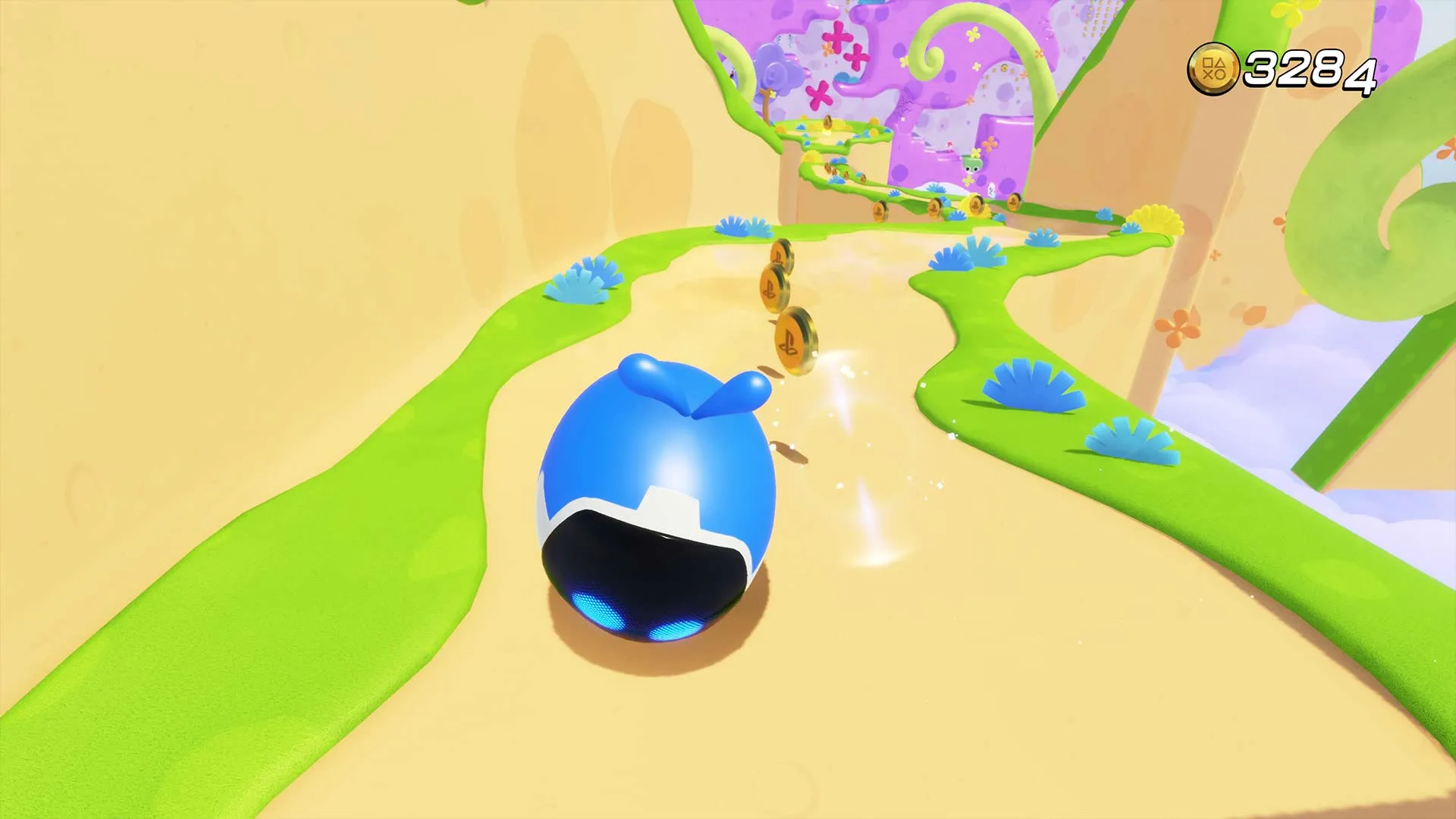

Comments
I consider, that you commit an error. I can prove it. Write to me in PM.